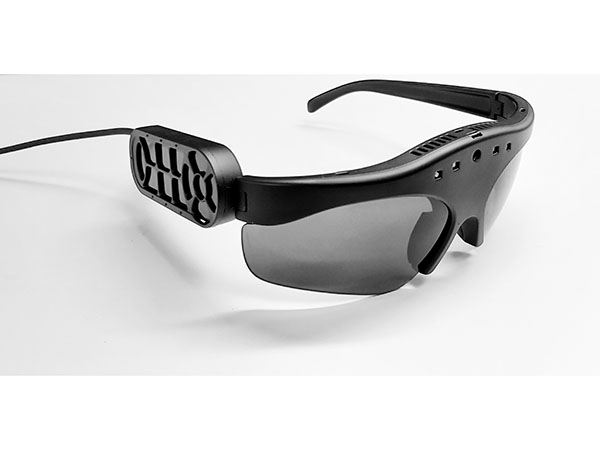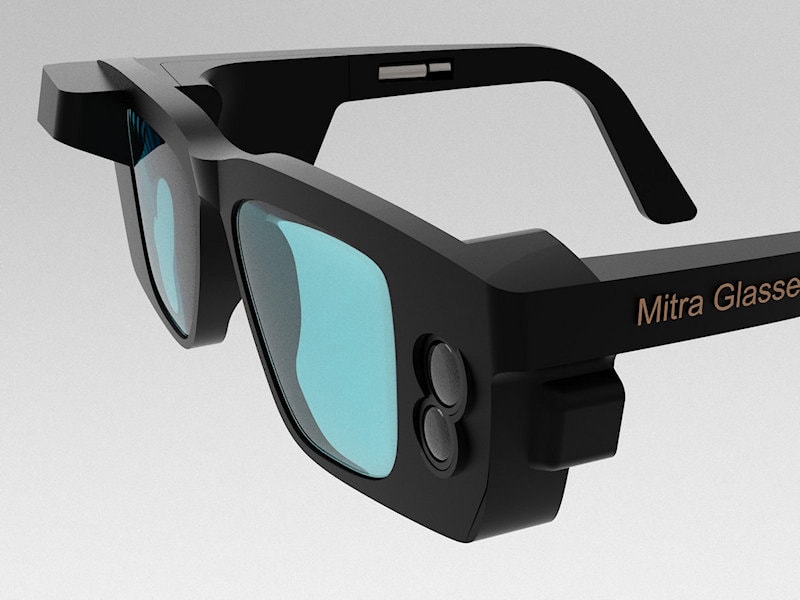Discover Advanced Assistive Instruments for People With Aesthetic Disabilities
The landscape of assistive innovation for people with visual disabilities is progressing quickly, providing a variety of innovative gadgets that enhance autonomy and involvement. From clever glasses that flawlessly combine visual input with acoustic advice to sophisticated navigating applications that redefine spatial understanding, these tools are reshaping possibilities.
Smart Glasses Innovations
Smart glasses stand for a substantial development in assistive innovation for people with aesthetic problems. Geared up with sensors and cameras, smart glasses can record real-time aesthetic details, which is then processed and communicated to the individual through sound responses or haptic experiences.
Furthermore, improvements in artificial intelligence have even more enhanced the abilities of smart glasses. Artificial intelligence algorithms can recognize faces, checked out message, and identify objects, making them indispensable tools for day-to-day tasks. Users can obtain auditory signs that supply context regarding their setting, fostering freedom and self-confidence.
Furthermore, the ergonomic design and light-weight nature of lots of wise glasses make them suitable for extended usage, making certain comfort while enhancing capability. As these tools remain to advance, they hold the potential to reinvent the means individuals with visual impairments experience their lives, bridging the space between access and technology. The continuous r & d in this area guarantee to broaden the opportunities for clever glasses, making them a crucial part of contemporary assistive gadgets.
Navigating Application and Devices
Many navigation applications and devices have become necessary resources for people with visual problems, dramatically enhancing their ability to traverse unknown settings. These modern technologies utilize GPS functionality, audio hints, and real-time data to provide customers with exact navigation aid.
One prominent instance is the Aira app, which attaches users to qualified representatives that can provide aesthetic descriptions of surroundings and navigation assistance via an online video feed. This service enhances the user's spatial understanding and self-confidence while navigating. An additional significant device is Seeing Eye GPS, which uses voice-guided navigating and factors of rate of interest, enabling customers to gain access to crucial info about their surroundings.

As modern technology remains to development, the development of more advanced navigation tools guarantees to more equip people with visual impairments, helping with smooth mobility and assimilation right into diverse atmospheres. Such technologies are important in promoting an extra inclusive culture.
Braille Technology Developments
In current years, innovations in Braille modern technology have substantially changed just how people with visual disabilities access information and involve with the globe around them. The growth of mobile Braille displays has changed reading by enabling individuals to attach wirelessly to tablet computers, computers, and mobile phones. These gadgets transform message into Braille in real-time, enabling smooth communication with digital web content.
Additionally, cutting-edge Braille printers have actually arised, improving the production of responsive materials. Modern embossers are quicker and a lot more effective, enabling the quick development of Braille papers and academic materials. This effectiveness reduces the time and price associated with producing sites Braille resources, making them a lot more accessible to schools and organizations.
In addition, the assimilation of Braille with other technologies, such as expert system and artificial intelligence, has opened brand-new methods for personalized discovering experiences. Voice Get More Information recognition and synthesis modern technologies can match Braille, supplying an inclusive strategy to info dissemination.
As the demand for comprehensive education and learning and office atmospheres expands, these technological innovations play a crucial function in equipping individuals with aesthetic disabilities, ensuring they have equivalent accessibility to details and possibilities in various elements of life.
Wearable Instruments for Freedom
An expanding array of wearable tools is boosting freedom for individuals with aesthetic impairments, offering innovative remedies that enhance navigating and day-to-day living. Braille displays and notetakers. These devices make use of advanced innovations to provide real-time comments and support, promoting autonomy in different environments

Wearable modern technology likewise includes smartwatches that can be programmed with accessibility functions, making it possible for users to get notices, track their areas, and even require aid with the touch of a switch. Furthermore, some gadgets include man-made intelligence to assess the environment, offering audio summaries of nearby objects or people.
Voice-Activated Assistive Solutions
Leveraging voice-activated assistive services has transformed the landscape of assistance for individuals with aesthetic problems, supplying hands-free interaction and access to a range of tasks. These innovations make use of natural language processing and expert system to make it possible for users to do daily activities with straightforward voice commands.

Moreover, recent improvements in voice recognition precision have improved the customer experience considerably, accommodating diverse accents and speech patterns. This inclusivity makes sure that even more people can gain from these modern technologies, promoting a greater feeling of freedom.
Final Thought
Finally, the advancement of advanced assistive devices substantially boosts the self-reliance and top quality of life for individuals with aesthetic disabilities. Developments such as smart glasses, navigating applications, Braille modern technology, wearable gadgets, and voice-activated services jointly foster an even more inclusive setting. These modern technologies empower users to browse their surroundings with confidence and engage even more fully with the globe, eventually promoting greater access and equal chances for individuals encountering aesthetic difficulties.
The landscape of assistive modern technology for individuals with visual disabilities is developing swiftly, providing an array of cutting-edge devices that enhance autonomy and interaction.Smart glasses stand for a substantial development in assistive innovation for people with aesthetic problems. As these tools proceed to progress, they hold the possible to transform the means people with aesthetic disabilities experience their daily lives, bridging the void in between ease of access and technology.In recent years, improvements in Braille innovation have actually considerably transformed how people with visual disabilities gain access to details and involve with the world around them. These innovations empower customers to browse their environments with self-confidence and engage even more completely with the world, eventually promoting higher accessibility and equal opportunities for people dealing with aesthetic obstacles.